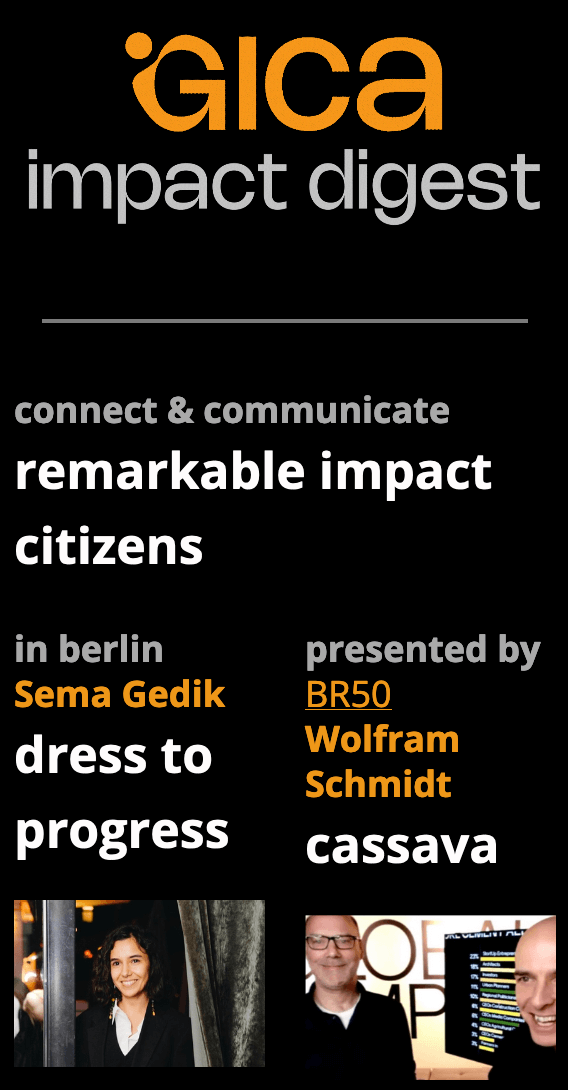You’re in a Berlin warehouse, surrounded by mountains of discarded corporate uniforms. To most people, it’s a graveyard of forgotten fashion. To Michael Pfeifer, it’s a gold mine. Welcome to MOOT, where yesterday’s DHL uniform is tomorrow’s streetwear sensation.

From Corporate Grave to Berlin Rave
“We take existing materials, put them back into use, and increase the value of the used material,” explains Michael, MOOT’s Co-Founder and CEO.
While the fashion industry continues its reign as one of the world’s dirtiest businesses (congratulations?), MOOT is busy saving 99.95% more water than your average t-shirt production. That’s not a typo – that’s what happens when you stop treating perfectly good materials like yesterday’s leftovers.

The Corporate Fairy Tale
Once upon a time in Berlin, MOOT looked at a pile of DHL uniforms and thought, “You know what these need? A second act.” Not content with just any transformation, they turned over a literal tonne of corporate uniforms into something that wouldn’t look out of place in a Berlin club’s notorious fashion line.

But Wait, There’s More (Than Just Good Intentions)
“Having a sustainable idea is not a USP (unique selling point),” Michael states. “Our upcycling products are, first of all, great products. Second, they are upcycled and thus, great for the environment.”
Translation: This isn’t your grandmother’s eco-fashion. No hemp sacks, no guilt-tripping, just pure Berlin style with a side of planetary salvation.

The Two-Faced Business (In a Good Way)
Like any good Berlin resident, MOOT leads a double life. By day, they’re MOOTstudio, teaching corporate giants how to turn their waste into wonder. By night, they’re MOOT, the brand making MOOT sustainable fashion actually, you know, fashionable.
Currently, they’re partnering with German football clubs, turning stadium banners into streetwear faster than you can say, “Goooooaaal!” Because nothing says “sustainability” quite like wearing last season’s championship banner as a jacket.

The Plot Twist
Here’s where it gets interesting: MOOT isn’t just trying to save the planet (though they’re doing a pretty good job at that). They’re trying to make upcycling as normal as buying second-hand. Remember when thrifting was weird? Yeah, neither does Gen Z.

In the short term, they’re going full corporate – but in a good way. MOOT’s seeing massive interest from marketing, sustainability, and branding departments who’ve suddenly realized their old uniforms could be worth more than their new advertising campaigns.
Long-term? They’re gunning to become the upcycling sector’s supreme leader. Not in an evil empire way – more in a “we actually know how to make sustainability sexy” way. They’ve already proved it works with DHL; now imagine what they could do with your company’s forgotten fabric fortune.

Want to Join the Revolution?
Here’s the part where you actually can: If your company’s about to trash some textiles, chuck out some banners, or purge some packaging materials, hold that thought. MOOT wants your trash. Actually, scratch that – they want your “pre-loved materials with untapped potential.” Because in Berlin, even “garbage” gets a rebrand.

At GICA, we’re all about supporting rebels with a cause, especially when they’re turning corporate waste into street cred. It’s called SDG12 (Responsible Consumption and Production), and we’re here for it.
Want to dive deeper into the world of impact? Strut on over to gica.community and join our coalition of change-makers. Maybe even get inspired by one of our other visionary impact citizens.

Remember: Every time you wear upcycled fashion, a fast-fashion CEO loses.
The future of fashion is circular, it’s rebellious, and thanks to MOOT, it’s surprisingly wearable.
Michael Pfeifer on LinkedIn? Here!



